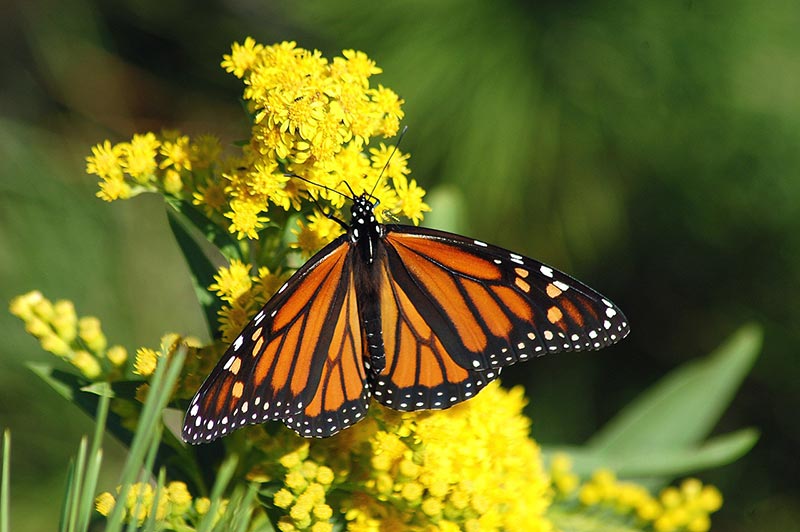What Is the State Insect of Minnesota? How Was It Decided?
-
Chris Dinesen Rogers
- Last updated:

The Monarch butterfly (Danaus plexippus) is one of the most common species throughout the world with populations in North, Central, and South America. It also lives in Australia and parts of Asia and Europe. It’s so recognizable and beloved that it seems no wonder Minnesota should honor it, too. While the state doesn’t have an official insect, the Monarch more than fulfills that role.
The idea of this practice started with the 1893 World’s Columbian Exposition or Chicago World’s Fair. The Congress of Representative Women wanted to acknowledge the states with a particular flower to be known as the “National Garland of Flowers.” Long after the exposition ended, women’s clubs around the country took up the cause. It soon spread to other designations, like birds, flowers, and insects.
A Lesson Learned
Many state symbols are grass root efforts. They’re a welcome deviation from more serious legal matters that legislatures will discuss. Minnesota’s state butterfly was no exception. The idea took flight at Anderson Elementary School in Mahtomedi, MN. The fourth-grade class had invited their local congressman, Representative Harry Mares, to explain how laws are passed to the students.
Teachers typically use one topic to touch on various aspects as part of their educational plans. The class happened to be studying Monarchs at the time. Not only were they learning about insects and ecology, but the migration patterns of the now-endangered migratory subspecies offered an excellent way to incorporate geography. The rest, as they say, is history.
The students put their civics lesson from Representative Mares into action with their own effort to make the Monarch the state butterfly. He and Senator Chuck Wiger rallied behind the class to sponsor Minnesota Statutes 1.1497 to make it official when Governor Jesse Ventura signed it into law on March 31, 2000. The Monarch joined the 12 state symbols previously designated.

What Makes the Monarch So Special?
Its characteristic colors make the Monarch readily identifiable. The butterfly and milkweed are inextricably linked. The insect depends on the plant as its sole food source and a place to lay its eggs.
The Monarch further benefits from this association because milkweed makes it toxic for predators, like birds, to eat. The plant contains a milky sap that is poisonous for most vertebrates to ingest, even humans.
Milkweed can sicken or kill livestock that eats it. It can cause GI distress, bloating, weakness, and cardiac arrhythmias. It doesn’t take much to induce symptoms. However, they may not become evident right away. People are often affected if they touch the sap and it comes in contact with their eyes and vision. That’s why it’s essential to wear gloves when gardening if the plants are present.
The Monarch Butterfly was the clear choice for Minnesota’s state insect and a classroom educational platform that has become the University of Minnesota’s Monarch Joint Venture. Students can learn so much by studying this seemingly insignificant organism.
Final Thoughts
The Monarch Butterfly joins other Minnesota state symbols, such as the Common Loon, Morel Mushroom, and Walleye. It’s a fitting addition to the iconic collection that defines the Land of 10,000 Lakes. We also can’t forget its significance in the classroom, where many children have learned life lessons from studying this insect.
- https://learninglab.si.edu/collections/a-national-garland-how-women-led-the-movement-to-declare-state-flowers/mAFroO4vbPlJakiE
- https://www.house.leg.state.mn.us/hinfo/swkly/1999-00/sw1000.pdf
- https://www.iucn.org/press-release/202207/migratory-monarch-butterfly-now-endangered-iucn-red-list
- https://www.revisor.mn.gov/statutes/cite/1.1497
- https://www.ars.usda.gov/pacific-west-area/logan-ut/poisonous-plant-research/docs/milkweed-asclepias-spp/
- https://blogs.ifas.ufl.edu/monroeco/2019/10/22/gardeners-beware-milkweed-toxicity/
Featured Image Credit: gyulche1, Pixabay
